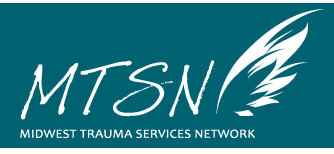In 2014 President Obama requested that the Department of Justice put together a group of elders involved with Indian health and mental health, to go around the country and meet with Tribes. The purpose of this group was to better understand what is currently happening on reservations. They wanted to figure out what needs to be done, and what has been done that is working. There were nine members selected for that group from across the country and that group included our own Judge Whitener. This group spent one year touring the country and meeting with Tribal members and agency representatives that work with Tribes. The results of that year are in a report called the “Attorney General’s Advisory Committee on American Indian/Alaska Native Children Exposed to Violence: Ending Violence so Children Can Thrive.” While the results of a year of testimony won’t surprise anyone, the fact that it is on record, that it is still occurring on the vast majority of reservations and that there is science to show what is happening. We know that it affects every aspect of being human, and this is important. What the advisory committee published in the report, that is most important to the Tulalip community, is an acknowledgment that exposure to challenging and traumatic events is three times the exposure of people in the general population. Paying attention to this finding is important because of what it means for a child in an unpredictable situation. That child must pay much more attention to what is going on around them in order to look for safety. This is also true for the Ancestors that experienced forced relocation, as well as being subjected to the horrific boarding school abuse. That abuse is well documented in Tribal histories but virtually ignored in American revisionist history. The constant betrayal by first the American government in treaty manipulation, exploitation of Native peoples for personal gain and the attempted removal of culture through the boarding schools, has resulted in a profound and cellular level mistrust of all things government. That deep and well founded mistrust extends to federal, state and county government.
The sovereignty that many Tribes have, give them room to take a breath from the conditioned exploitation by American culture, at least in the geographical spaces that seemingly are safe. The downfall of these findings is that there is not enough Native American research available to access what is actually happening and which interventions are known to work. Fortunately the advisory committee heard the same information from enough different tribes to come to some consensus. That information combined with the current exploding science on genetics and the brain allow us to know some things with relative certainty.
- Transgenerational trauma is real and it is impacting our community every day.
Translation: what happened to our ancestors with forced relocation, betrayal and boarding school abuse is in the bodies at the cellular level for today’s descendants and drives many of the behaviors and emotions that we struggle with.
2. The passed down trauma influences emotion and behavior in a way that continues to retraumatize the next generation.
Translation: When we cant stand the way someone is acting we treat them the same way our ancestors were treated, we violate, confront, beat or reject/isolate that person.
3. Everything is connected and everything you do affects the tribe.
Traslation: What was beat into many of our ancestors was fear and grief. It is not their fault. Their behavior is a result of being tortured. The point here is that it does no good to find fault inside the tribe for sickness that we became infected with. The cure is nurturing and understanding.
4. Being traumatized is subjective.
Translation: We can’t determine what someone else is traumatized by, the things that make them unique may also be the things that make them vulnerable. A child who comes from a home where there is little or no love is going to be traumatized by a beating or a rejection and their reaction is going to be very different from a child who comes from a good enough home. The difference is love, I will tolerate and learn what you want me to learn from a spanking or rejection because I know that I am loved anyway. If I am not loved, I will learn how to use violence and rejection as tools to exert power as I grow and because I haven’t been taught to love I will use them in a way that will keep me from love.
And finally;
5. Love heals.
Translation: When you are vulnerable enough as an adult to relax and breath in a hug with another human being that you love you release oxytocin, this is a neurochemical that bonds people together, Oxytocin stem cells have been shown to repair heart muscle, when you love you repair the heart, it is not just saying, it is real.
